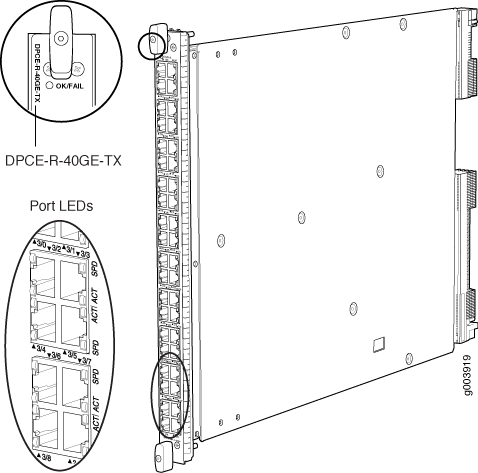Tri-Rate Enhanced DPC

|
Software release |
|
|
Description |
|
|
Hardware features |
|
|
Software features |
|
|
Interfaces |
Syntax: ge-fpc/pic/port where:
For example, ge-1/3/0 is the interface for port 0 (labeled 3/0) in the right-most grouping of ports on a DPC installed in slot 1. |
|
Cables and connectors |
Tip:
You can use the Hardware Compatibility Tool to find information about the pluggable transceivers supported on your Juniper Networks device. The list of supported transceivers for the MX Series is located at https://pathfinder.juniper.net/hct/category/#catKey=100001&modelType;=All&pf;=MX+Series.
CAUTION: Do not use RJ-45 cables with strain-relief boots exceeding 1.5 mm from the bottom of the connector. Cable boots that exceed this measurement can damage the port. |
|
LEDs |
OK/FAIL LED, one bicolor:
ACT LED, one green per port:
SPD LED, one bicolor:
The ACT and SPD LEDs are located on either side of the ports labeled horizontally and top to bottom 0/0 through 3/9. |
